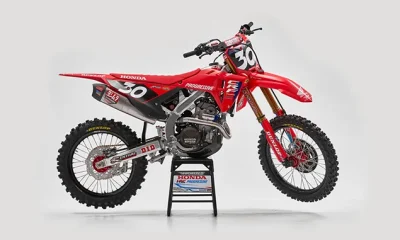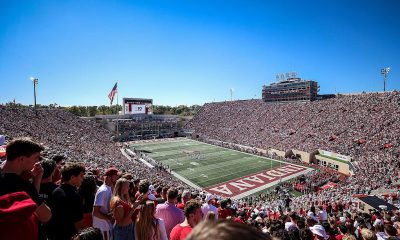Good morning, Hubsters! Rafael Canton here with the US edition of the Wire from the New York newsroom.
Let’s kick off the Wire with college sports. After a settlement in the House vs. NCAA, college athletes can be directly compensated by schools. That could open opportunities for PE firms to invest. We’ll dive into what we know so far.
We’ll look at how deal value has risen so far despite deal count dropping according to HarbourVest’s 2025 Midyear Market Outlook.
Also, in a deal announced yesterday, Verlinvest and Mistral Equity Partners have increased their investment in Insomnia Cookies. The focus for both firms has been about expansion both nationwide and internationally.
Finally, we’ll dig into restaurant deals and why they are attractive. Houlihan Lokey has its US Restaurant Industry update.
Pay day
On Friday, a federal judge approved a settlement in the House vs. NCAA. The settlement will allow college athletes to be directly compensated by NCAA institutions for their name, image, and likeness (NIL) rights.
Private equity is expected to have interest in the college sports arena. In April, Buyouts reporter Alfie Crooks covered how the eventual settlement could lead to PE investment. In 2024, RedBird Capital Partners and Weatherford Capital created Collegiate Athletic Solutions, a capital- and business-building provider for public and private university athletic departments across the US.
“The paradigm shift we are seeing in the collegiate athletics ecosystem is similar to the ones we’ve seen with media distribution models, collective bargaining rights, and premium hospitality – they’re all centered around the need to create long-term growth by bridging the gap between premium IP and optimizing revenue streams,” Gerry Cardinale, founder of RedBird, said in a statement at the time of the CAS formation.
Under the new rules that could arise from the settlement in the antitrust case, universities would be allowed to distribute up to 22 percent of gameday revenue with student athletes, with each school subject to a $21 million per-year cap that grows by 4 percent each year.
The pool of capital distributed can be derived from revenue streams including ticket sales, broadcasting rights and sponsorships, shifting the college model closer to a professional model. It would not include NIL payments from outside sources or scholarships.
PE Hub has been following the college sports interest from PE firms since 2024. Before, the only deals that could be done involved NIL. Harlan Capital Partners invested in Nilly, which is a financial technology company with an online marketplace that allows college student athletes to maximize the value of their NIL.
At the end of the year, I highlighted college sports as one of the growing trends in PE’s interest in the overall sports ecosystem.
Increased deal value
Despite economic uncertainty, global private equity buying activity held up well in the first three months of 2025 according to HarbourVest’s 2025 Midyear Market Outlook. Private equity deal values rose to $495 billion in Q1 2025, surpassing the Q4 2024 total of $462 billion and a near-40 percent YoY increase ($345 billion).
Deal count in the first quarter was down slightly from Q4 2024 but also above Q1 2024. The report notes that there has been a slowdown in dealmaking in recent months and it seems unlikely that Q2 figures will show sustained momentum.
The report also highlights how US private equity had a 25 percent increase in Q1 value invested over the previous quarter and a jump of 36 percent on Q1 2024. One reason for the increase was take-private transactions.
The quarter’s total public to private deal value was $51 billion, or around one third of the total for full-year 2024 and 2023. In April, I highlighted how take-private deals in software have held their own and what makes take-privates in software attractive to PE firms.
Sweet progress
Verlinvest and Mistral Equity Partners have increased their investment in Insomnia Cookies, a New York and Philadelphia-based late-night bakery brand. Both firms are acquiring Krispy Kreme’s remaining stake in the deal.
Insomnia Cookies is now on track to scale to 1,800 bakeries globally over the next decade. Seth Berkowitz serves as CEO and founder of Insomnia Cookies.
“We believe Insomnia Cookies has all the ingredients to become a global icon in quality indulgence: a visionary founder, a cult-like following, and a clear edge in digital convenience,” said Clément Pointillart, managing director at Verlinvest in a statement. “We’re proud to deepen our commitment to Seth and the team as we help take Insomnia across the globe.”
In 2024, I spoke to both Verlinvest and Mistral about the initial deal which saw Krispy Kreme break off pieces of its majority stake to both PE firms. Expansion both nationwide and internationally was a focus for both firms with the deal at the time. Insomnia had 293 locations in 2024, so 1,800 locations is a huge step. Pointillart pointed to Verlinvest’s past investments in brands like Oatly and Tony’s Chocolonely as examples of its history in taking brands international.
Rapid expansion
Restaurant franchise assets continue to command premium valuations, driven by their asset-light economics, predictable cash-flow profiles, and ability to scale rapidly through multi-unit development according to Houlihan Lokey’s US Restaurant Industry update.
Recent premium multiples have favored platforms with 200-plus locations, reflecting investor preference for concepts with proven operating models, geographic diversity, and runway for continued unit expansion.
Private equity has consistently had interest in restaurants. Roark Capital announced an investment in Dave’s Hot Chicken. Several media outlets reported the value of the deal was $1 billion. The chain specializes in Nashville style hot chicken and expects to end the year with more than 400 restaurants according to a statement. In November, Blackstone took a majority stake in Jersey Mike’s Subs in November.
The report said that the year began with several large owned and franchised brands preparing to enter the market. While early signs point to a strong pipeline, market appetite will be tested in the months ahead as buyers and investors navigate a complex economic and global environment.
I’ve been covering PE’s interest in franchises for a few years and shared insights from dealmakers back in 2023.
That’s it for me. If you have any questions, thoughts, or want to chat about deals in the tech, consumer or sports sectors, please email me at rafael.c@pei.group.
Tomorrow, Nina Lindholm will be with you for the Europe edition of the Wire and Michael Schoeck will bring you the US edition.
Cheers,
Rafael

























































